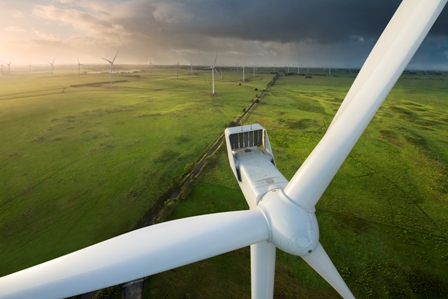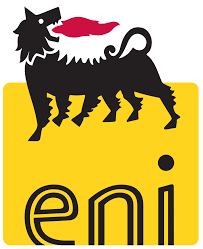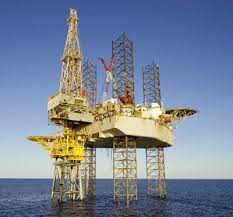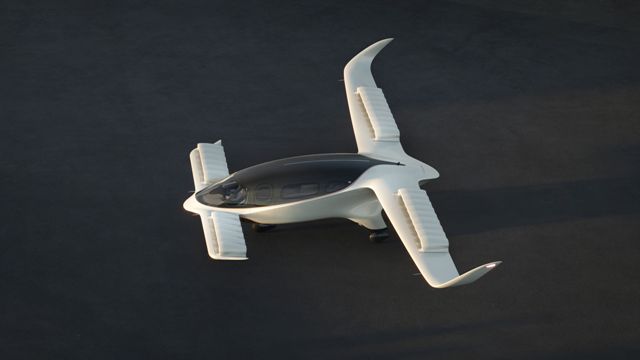
Latest Energy News As Reported | U.S. Rig Count down 3 to to 755 rigs
London, 31 March, 2023, (Oilandgaspress): U.S. Rig Count is down 3 from last week to 755 with oil rigs down 1 to 592, gas rigs down 2 to 160 and miscellaneous rigs unchanged at 3. U.S. Rig Count is up 82 rigs from last year’s count of 673 with oil rigs up 59, gas rigs up 22 and miscellaneous up 1.
The U.S. Offshore Rig Count is unchanged at 18, up 4 year-over-year.
Canada Rig Count is down 26 from last week to 139, with oil rigs down 28 to 58, gas rigs up 2 to 81.

Vestas has received a firm order from YPF Luz for the supply and installation of 25 V162-6.2 MW EnVentus wind turbines for the 155 MW General Levalle wind park in the province of Córdoba, Argentina. This will be the first project in Argentina to feature turbines from Vestas’ EnVentus platform.
Upon completion, Vestas will also deliver a 25-year Active Output Management 5000 (AOM 5000) service agreement. This agreement will optimise energy production while also providing long-term business case certainty.
“YPF Luz aims to lead the energy transition in Argentina, based on innovation and operational excellence. Today, we are building our fourth wind farm with a capacity of 155 MW and are proud to feature Vestas’ EnVentus technology,” says Martín Mandarano, CEO of YPF Luz.
“We are very proud to introduce turbines from the EnVentus platform to the Argentinean market with this project. This reaffirms our commitment to work together with YPF Luz to transform Argentina’s energy matrix like we did for YPF Luz´s Manantiales Behr wind farm, where we introduced the 4 MW platform in Argentina. Utilising the EnVentus platform’s modular technology design and large-scale converter, the turbines of this wind farm will optimise the customer’s business case and meet the different requirements and challenges of the grid in the country,” says Andrés Gismondi, Sales Vice President of Vestas LATAM Southern Cone. Turbine delivery is planned for the fourth quarter of 2023, whilst commissioning is expected for the third quarter of 2024.
Vestas pioneered Argentina’s wind energy market with the installation of the country’s first commercial wind turbine in Comodoro Rivadavia in 1994. Read More
Vestas has signed a preferred supplier agreement for a 495 MW floating offshore wind project in South Korea. If the project materialises, Vestas will supply and install 33 units of the V236-15.0 MW turbine for the project. Read More

New Delhi has resisted Western pressure to freeze out Moscow, opting instead to strengthen trade ties with its long-standing ally — with the added benefits of tempering inflation while saving money.
How much Russian oil is India buying?
India is the world’s third-largest crude consumer after the United States and China, and imports 85 percent of its needs.
Previously its main suppliers were in the Middle East. Now, Russia is number one.
For isolated Moscow, India and China have become its top customers.
In March, India imported from Russia 1.62 million barrels per day (bpd), 40 percent of its total oil imports, according to the International Energy Agency, up from around 70,000 bpd and just one percent of inflows before the war.
On Wednesday, Russian energy giant Rosneft announced a deal to “substantially increase” supplies to the state-owned Indian Oil Company following a visit to India by CEO Igor Sechin.Asia’s richest person Mukesh Ambani’s Reliance Industries runs the world’s largest refinery in Gujarat, where he has ramped up purchases of Russian oil. Read More

United States is now the biggest supplier of crude oil to the European Union.
In December, 18% of the bloc’s crude imports came from America, EU data office Eurostat said Tuesday.
That is a big turnaround. Russia was until recently the bloc’s top supplier of crude, accounting for as much as 31% of total imports until the end of January 2022, according to Eurostat. The US, meanwhile, came a distant second, with a maximum 13% share.
But Moscow’s invasion of Ukraine in February last year led to an upheaval in Europe’s energy supplies.
EU states slashed their imports of Russia’s energy, and the bloc imposed sanctions on the country’s oil and coal exports. Read More

Vestas has received an order from JUWI GmbH for five wind projects in Germany totalling 63 MW. The order includes supply, installation, and commissioning of the turbines, as well as a 20-year Active Output Management 4000 (AOM 4000) service agreement, designed to ensure optimised performance of the asset.
The order consists of the Windpark Olsberg Mannstein in North Rhine-Westphalia with seven V126-3.45 MW turbines, the Windpark Perl-expansion in Saarland with one V150-5.6 MW turbine as well as the Windpark Lauda Heckfeld II in Baden-Wuerttemberg and Windpark Laudert III in Rhineland-Palatinate that both consist of one V162-5.6 MW turbine. Finally, the Windpark Jülich Güsten in North Rhine-Westphalia includes four V162-5.6 MW turbines.
“We are proud to yet again be trusted to deliver turbines to JUWI. The strong and trustful collaboration is highlighted by the parties signing five projects at once. I would like to thank JUWI for the continued confidence that they have placed in us”, says Jens Kück, Vice President Sales Central at Vestas. “These five projects are a testimonial of our shared vision for a sustainable future and our commitment to accelerate the German energy transition”. Maximilian Nowak, Director Corporate Supply Chain at JUWI, adds: “We are very pleased that we have been able to contract with the European market leader and long-term partner for our projects, especially under currently challenging circumstances. I would like to express my sincere thanks to the entire Vestas and JUWI-teams involved in the transaction”. Installation of the first turbine is scheduled to begin in the first quarter in 2024, with commissioning of all turbines expected by the end of the fourth quarters of 2024. Read More
Vestas has received a 140 MW order for the Cerrato, Atalayas and San Cebrián wind parks, to be located in Castilla y León, Spain. The contract includes the supply and installation of 20 V163-4.5 MW wind turbines and 11 V150-4.5 MW wind turbines, as well as a 10-year 4000 Active Output Management (AOM 4000) service agreement.
The San Cebrián and Cerrato wind parks will feature the first V163-4.5 MW wind turbines in Europe. The V163-4.5 MW has a large rotor-size-to-rating ratio resulting in a high capacity factor, which in turn enables higher Annual Energy Production and more stable power output at park level. This improves predictability and stability in production, optimising the utilisation of the wind park as well as benefitting the energy grid.
The order has been placed by Estudios y Proyectos Pradamap y Cerrato Eólica (Grupo Vapat). The company has developed and commissioned 650 MW of wind power, and currently has over 2,500 MW of wind power and PV hybrid projects in different states of development and construction.
“We would like to thank Pradamap (Grupo Vapat) for renewing their trust in the Vestas 4 MW platform. This order showcases how our latest models can provide our customers with the reliability and predictability they need to optimise their business case in Spain. We expect that our full converter technology and our strong market presence will continue to contribute to the energy transition in the country”, says Agustín Sánchez-Tembleque, Vestas General Manager Spain & Portugal.
Turbine delivery and commissioning are expected by 2024. The project will also benefit from Vestas’ manufacturing footprint in Spain. The company manufactures V150 blades at its factory in Daimiel (Ciudad Real) for the 4 MW and the EnVentus platforms. Since 1991, when Vestas installed its first wind turbine in Spain, the company has secured an order intake of more than 5.1 GW for over 130 wind parks in the country. Read More

Eni, operator of the transport and storage of carbon dioxide for HyNet North West, announces the achievement of a great result which strengthens the company’s position to become the first operator for Carbon Capture and Storage (CCS) projects in the UK.
The UK Department for Energy Security and Net Zero (DESNZ) has announced the first carbon capture projects that will access the £20bn in funding provided by the government for Track 1 initiatives, to accelerate the UK’s industrial decarbonization. Five projects submitted as part of the HyNet North West cluster (out of 7) have been confirmed in the eight projects earmarked for funding, for which Eni will be responsible for the transportation and storage of carbon dioxide emissions. The other 3 selected projects (out of 14 submitted) belong to the East Coast Cluster on the East Coast of the UK.
With this decision, the United Kingdom confirms its position as one of the leading countries for the development of Carbon Capture and Storage CCS. CCS is a technological process that avoids the release of carbon dioxide emissions from industrial activities into the atmosphere. CCS plays a fundamental role in the decarbonization of “hard to abate” sectors, for which there are currently no equally effective solutions. For this reason, in its latest report in 2022, the Intergovernmental Panel on Climate Change (IPCC) defined CCS as “essential” to achieve global climate objectives. The International Energy Agency (IEA) estimates that CCS will contribute to reducing the 10% of total emissions to be reduced over the next 30 years, reaching a total of 6.2 billion tonnes captured in 2050.
The implementation of the projects selected from the HyNet consortium will contribute to the decarbonization of large emitting companies in the industrial hub of North West England and North Wales, including the cement sector, “Waste to Energy” and in the production of hydrogen with a low carbon footprint. The volume of CO2 that will be captured under the selected projects, equal to approximately 3 million tonnes per year, will then be gathered, transported and permanently stored by Eni in its own depleted gas fields off the coast of Liverpool Bay, which have a total storage capacity of about 200 million tonnes.
Thanks to the development of the HyNet CCS project, Eni will play a leading role in the decarbonization process of the United Kingdom which has identified the Capture, Transport and Storage of CO2 as one of the fundamental tools for achieving the objectives in the fight against climate change.
The HyNet project will transform one of the UK’s most energy-intensive industrial districts into the world’s first low-carbon industrial cluster. The project is expected to start in the mid current decade with an injection rate of approximately 4.5 million per year in the first phase, and the capacity to reach approximately 10 million tonnes of CO2 per year from 2030. The volume of CO2 emissions avoided represents a significant share compared to the 20-30 million industrial emissions reduction target associated with CCS by the UK Government, and will also contribute 40% to the national target of producing 10GW of low carbon hydrogen. In addition to the benefits from an environmental standpoint, HyNet will promote a new impetus to the development of the region thanks to investments in projects and the creation of new jobs linked to the promotion of new production chains. From an employment perspective, the project will preserve current levels and at the same time will favor the creation of around 56,000 new jobs in the period 2022-2030 in the Liverpool Bay area. Read More

EQT and Cat® Dealer Cleveland Brothers Demonstrate Performance of Hydrogen Fuel Blends for Powering Natural-Gas Drilling Rigs
Caterpillar Inc. (NYSE: CAT) today announced the results of a hydrogen demonstration project commissioned by EQT Corporation (NYSE: EQT), the largest producer of natural gas in the United States, which evaluated the performance of a land drilling power module fueled by varying blends of diesel, compressed natural gas (CNG) and hydrogen.
As part of the Caterpillar commitment to build a better, more sustainable world, experts from Caterpillar worked with EQT and Cat dealer Cleveland Brothers to design and manage a bench test and three-week demonstration. Two wells were drilled with a fuel consisting of hydrogen blended with CNG supplied by Certarus Energy. The demonstration, which was conducted on Patterson-UTI’s land drilling rig in Greene County, PA and involved utilizing a 1 MW Cat® 3512C land drilling module with dynamic gas blending (DGB™) technology, confirmed the performance of hydrogen as a viable fuel across a series of steady-state and transient operational test points. The use of hydrogen blended with CNG also enabled a reduction in carbon dioxide emissions. The project identified areas for future development, including the evaluation of the long-term effects of hydrogen combustion on engine components, acceptable hydrogen limits for broader deployment, hardware and software customization, and the identification of applicable regulatory certifications.
Caterpillar Oil & Gas is ready to support the oilfield of the future, and understands that operations will require more power, more up time and more insight. This test highlights the support and focus from Caterpillar to provide customers with a customized solution to help them meet their environmental, social and governance (ESG) goals.
EQT has a long-standing commitment to ESG and has pledged to achieve net zero greenhouse gas (GHG) emissions from production segment operations on a Scope 1 and Scope 2 basis by or before 2025. This recent project is just one of several ESG initiatives designed to help EQT advance towards reaching that goal.
“As an operator of choice focused on delivering long-term value for all our stakeholders, we have embraced our role as a catalyst for transforming technology, culture and environmental performance, and this demonstration project was an important step forward in understanding the viability of hydrogen as a fuel in a production environment,” said Jared Lowery, Principal Drilling Engineer at EQT. “For decades, we have depended on the reliability, durability and consistency of Cat power solutions at our production sites, which is why we selected Caterpillar and Cleveland Brothers to spearhead this demonstration project on our journey toward a reduced carbon future.” The demonstration project is the latest in a series of initiatives across the Caterpillar enterprise to develop and commercialize hydrogen-fueled power solutions. In May, Caterpillar announced a project with District Energy St. Paul to demonstrate a 2.0 MW combined heat and power (CHP) system fueled by various combinations of hydrogen and natural gas. Read More

Lilium N.V. (NASDAQ: LILM), developer of the first all-electric vertical take-off and landing (“eVTOL”) jet, and battery cell production partner, Customcells, are ramping up battery cell production of Lilium’s high silicon content cells with weekly deliveries from Customcells production line in Tübingen, Germany. The production line will deliver thousands of cells annually and is on track to meet aviation standards for traceability and process control using a combination of standard cell production processes and a pre-lithiation process for high silicon content cells.
Lilium partners with Ionblox for its exclusive silicon anode cell technology that allows for greater energy and power density combined with high cycle life. Following their partnership announcement in 2021, Customcells and Lilium are now successfully leveraging a pre-lithiation process that the companies are further industrialising towards volume production. The pre-lithiation process, a key advantage for enabling greater energy and power density, inserts additional lithium to compensate for the loss of lithium during the first cycle. Furthermore, Customcells’ production traceability will enable Lilium to meet aviation standards and support production certification needs by delivering process-level and cell-level data to Lilium. Lilium remains on track to start production of its type-conforming aircraft later this year and plans for first manned flight of the type-conforming aircraft in the second half of 2024. For Lilium, this agreement represents an important step towards final assembly of the conforming aircraft due to begin later this year. Lilium already has agreements in place for aerostructures, avionics, battery cells, energy management systems, e-motors, propulsion system, aircraft interior and landing gear, among others. This announcement follows recent test results from a third-party independent laboratory which reported 88% energy retention – well above the 80% target – in Ionblox’s full-size prototype battery cells being developed for the Lilium Jet after 800 charging cycles with 100% depth of discharge (1C/1C cycles). Read More
Baker Hughes Rig Count: U.S. -3 to 755 Canada -26 to 139
| Region | Period | Rig Count | Change from Prior |
| U.S.A | 31 March 2023 | 755 | -3 |
| Canada | 31 March 2023 | 139 | -26 |
| International | February 2023 | 915 | +14 |

OilandGasPress Energy Newsbites and Analysis Roundup | Compiled by: OGP Staff, Segun Cole @oilandgaspress.
Disclaimer: News articles reported on OilAndGasPress are a reflection of what is published in the media. OilAndGasPress is not in a position to verify the accuracy of daily news articles. The materials provided are for informational and educational purposes only and are not intended to provide tax, legal, or investment advice.
Information posted is accurate at the time of posting, but may be superseded by subsequent press releases
Please email us your industry related news for publication info@OilAndGasPress.com
Follow us: @OilAndGasPress on Twitter |
Oil and gas press covers, Energy Monitor, Climate, Renewable, Wind, Biomass, Sustainability, Oil Price, LPG, Solar, Marine, Aviation, Fuel, Hydrogen, Electric ,EV, Gas,


